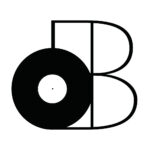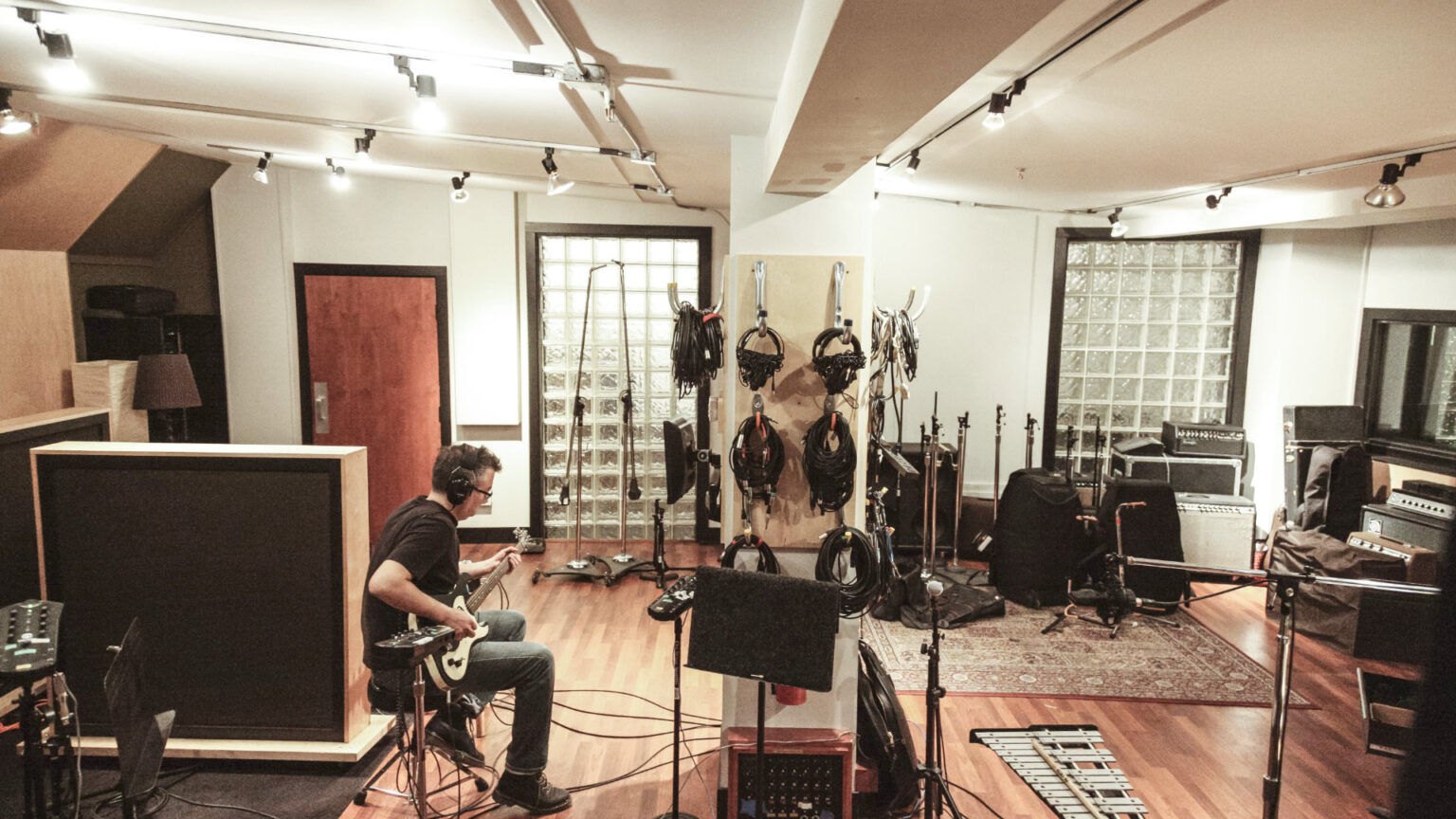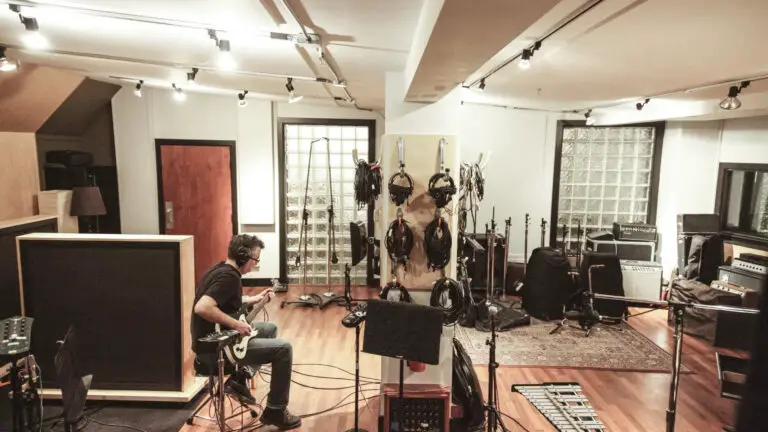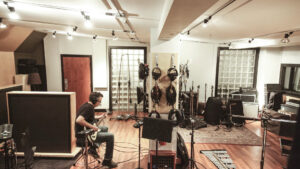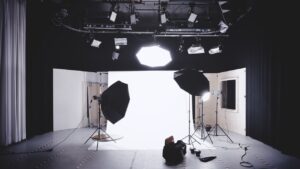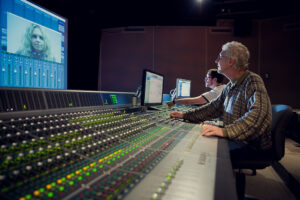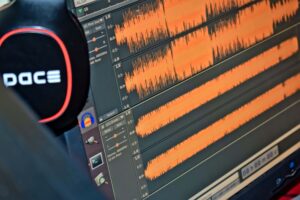So, how much do you think it costs to record in a commercial recording studio?
It can cost anywhere from 30-200$ per hour (that could add up to 1,600$+ per day). AND, keep in mind that most albums take between 60-100 hours to complete (yup, it could easily cost 200,000$+).
I guess we should just call it a day, but NO. I have a better idea…
I believe that we can build a professional home recording studio with a 3,000$ budget.
Does it sound impossible? Still too expensive?
Think about it… You could have UNLIMITED studio time for what it’d cost you to have just TWO DAYS in a commercial recording studio.
That sounds like a pretty good deal to me!
BUT, is it actually possible? You’ll just have to keep reading to find out…
- 6 Equipment Essentials for a Home Recording Studio
- 2 Software Essentials for a Home Recording Studio
- Acoustic Treatment for a Home Recording Studio
- Soundproofing for a Home Recording Studio
- Summary: How To Build a Home Recording Studio for Music Production
6 Equipment Essentials for a Home Recording Studio
1. Computer
It’s the first and most important tool you’ll need to build a home recording studio.
If you’ve already got yourself a computer, you just need to make sure it’ll be suitable for music production. You can do that by reading my “Computer Buying Guide for Musicians”.
I’ve also written plenty of articles on the subject…
If you need a quick answer though… You’ll need a powerful CPU and at least 8 GB of RAM.
BUT, is it better to use Mac or PC for a professional home recording studio?
I personally stand by Mac 100% (I use the Mac Mini M1), but the truth is it doesn’t really matter.
If you’re going to use Windows though, just make sure to allocate time for troubleshooting!
2. Audio Interfaces
Of course, you’ll need an audio interface if you plan to record anything!
However, there are LOTS of different types of audio interfaces. Choosing the right one for your home recording studio can be difficult at first, but it’s simpler than you think…
- 2+ Best USB Audio Interfaces for Home Recording
- 2+ Best Thunderbolt Audio Interfaces for Home Recording
If you ask me though, I’d start with a 2-channel Thunderbolt audio interface with DSP.
If you need more channels though, then I’d go for a USB audio interface. That’s because you most likely won’t be needing onboard DSP if you’re recording a drum kit, a band, etc…
I use the UAD Arrow (Thunderbolt) and the Zoom F6 (USB-C) which I also use on TV and film sets.
3. Storage Drives
When it comes to internal storage, I definitely advise you to go with a solid state drive (SSD).
I also recommend a minimum of 256 GB (but, I’ve managed with 128 GB in the past).
You’ll be using this drive to install all your recording software and audio plugins. If you’ll be working with sample libraries, those should go on an external storage drive (SSD as well).
When it comes to storing projects, I suggest an external hard disk drive (HDD).
I only store projects that I’m working on right now on my internal drive.
So basically, I’d definitely have an external SSD and one or two external HDDs in my home recording studio if I were you!
If you want a better idea of how I set that up, you can read these articles…
4. MIDI/USB Controllers
There’s a MIDI/USB controller for every type of music producer!
Unless you’re planning on doing everything with a mouse/keyboard (it’ll get VERY tedious, trust me), you’ll definitely want to have at least one control surface.
I definitely recommend a MIDI/USB keyboard controller though…
You’ll also find some that have drum pads if that’s something you need.
For me though, the M-Audio Hammer 88 has everything I could ever need!
5. Studio Headphones
If you had to choose between studio monitors and headphones… Go with the headphones.
I’d rather spend more on a few pairs of headphones instead of getting reference monitors for a room that isn’t acoustically treated (which we’ll talk about later).
You don’t need to spend a lot to get great studio headphones though…
Closed-back or open-back?
I suggest prioritizing closed-back headphones since you’ll definitely need those to record. The Beyerdynamic DT770 PROs are great all-purpose studio headphones.
Open-back headphones will give you better soundstage, but that’s why we have studio monitors…
6. Studio Monitors
Now, it’s pretty much the same deal with studio monitors.
I don’t believe that you need to spend a lot to get great-sounding reference monitors. However, you’ll definitely want to do your research…
Do you really need to have sub-frequencies though?
It really depends on what you intend to monitor with your speakers. Most genres of music won’t require it, but you’ll definitely want subs for EDM.
Actually, when it comes to EDM you’ll want the BIGGEST studio monitors you can afford.
Why? You want to get as close as possible to the venues the music will be played at.
2 Software Essentials for a Home Recording Studio
1. Digital Audio Workstation (DAW)
It’s decision time! Which DAW should you use for a home recording studio?
The truth is, it all depends on how professional you want your studio to be and what type of music you’ll be dealing with the most.
Generally speaking though, these are the DAWs used by most commercial recording studios…
- Logic Pro
- Pro Tools
- Cubase
If you ask me, Logic Pro is the easiest one to use and has all the advanced tools you need.
Pro Tools might seem like the industry standard, but I assure you that Logic Pro and Cubase are just as powerful.
So, it all comes down to personal preference in the end!
You could also use more than one DAW if that’s what you prefer.
2. Sample Libraries & Software Instruments
You’ll definitely want sample libraries for your home recording studio.
Nowadays, it’s not always possible to get real musicians and it might not be realistic depending on the budget of the projects you’ll be working on.
I’ve already talked about the sample libraries I use in my studio HERE.
In my opinion, you’re better off starting with a subscription-based sample library (like EW Composer Cloud) and building around that instead of splurging on individual sample libraries.
Of course, the libraries you’ll be using will vary depending on the genre of music.
Also, don’t forget… Your DAW most likely includes a few libraries, so only get what you need!
Acoustic Treatment for a Home Recording Studio
It’s quite likely that your home recording studio is, well, at home!
BUT, your house/apartment was most likely not designed to be acoustically sound. So, we’re going to have to improve the room you’ve chosen if you want professional results.
Can it be done? Of course!
Will it cost a fortune? Not necessarily, but it’ll definitely be a significant expense.
That being said, it might not be the first thing on your “to-do list” when building your home recording studio AND it shouldn’t be.
Remember, studio headphones are basically an acoustically treated/soundproofed room.
You’ll only want to treat your room for acoustics if you’re ready to start relying more on your studio monitors and recording acoustic instruments like vocals, drums, etc…
However, that’s a whole discussion in itself, so I highly recommend checking out THIS GUIDE I wrote on soundproofing your home recording studio.
AND, there’s also a video…
Soundproofing for a Home Recording Studio
If your home recording studio is in an apartment… Good luck!
If your home recording studio is in a house… Good luck!
Seriously though, soundproofing a room isn’t an easy job even if you own the space you’ll be working in. It’s also VERY expensive (definitely the most expensive part).
Good news though… You don’t necessarily need a soundproofed room to get great results.
It’s also impossible to soundproof a room 100% (even if you’re rich).
If it’s something you’re interested in getting into, I’ve written THIS GUIDE and also designed a DIY portable soundproof booth that you could attempt to build.
AND, there’s also a video…
Summary: How To Build a Home Recording Studio for Music Production
Did you enjoy learning how to build a home recording studio?
It’s much more accessible than it’s ever been and it doesn’t need to cost you as much as you think. You could probably get started for under 1000$.
However, I recommend planning a budget of at least 3000$ if you want it to be professional.
Of course, I hope you won’t be spending it all in one place!
You should be able to get everything you need with that (including acoustic treatment)…
- Computer
- Audio Interface
- Storage Drives
- MIDI/USB Controller
- Studio Headphones
- Studio Monitors
- Digital Audio Workstation
- Sample Libraries
- Software Instruments
- Audio Plugins
Of course, that’s only if you follow this guide to the letter. It definitely won’t be enough to get into soundproofing though.
You’ll need a budget JUST for that and it can get expensive pretty quickly.
Luckily, building a home recording studio is something that can be done over the course of your career. Get what you need, when you need it!
If you have any questions along the way, feel free to leave them in the comments!
Sources
https://www.rollingstone.com/music/music-news/home-studio-setup-recording-how-to-790937/

